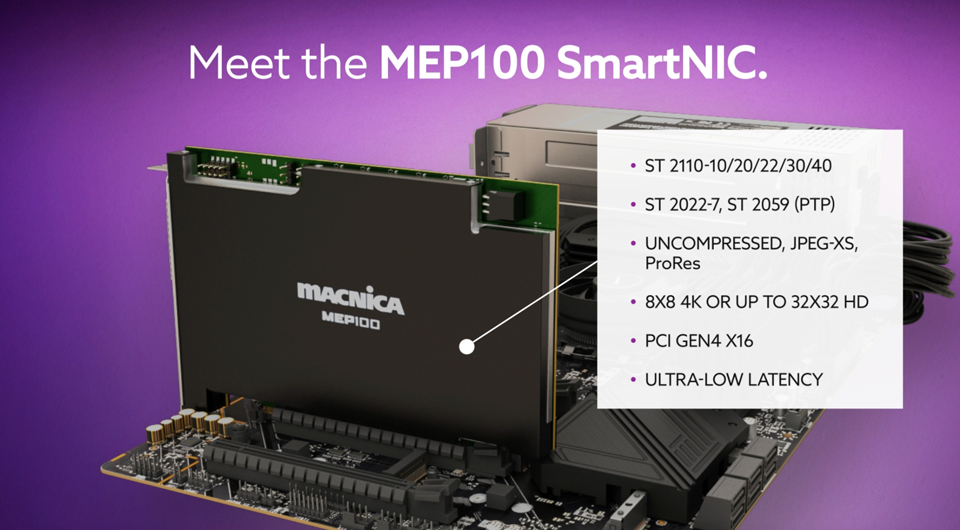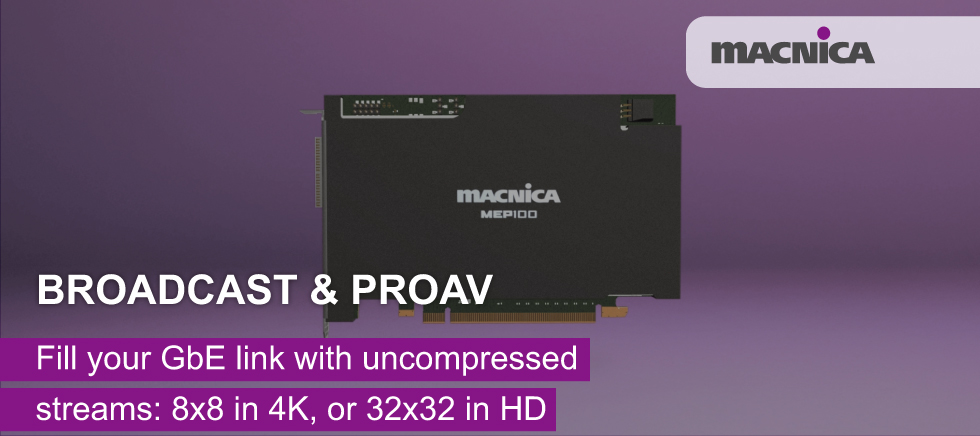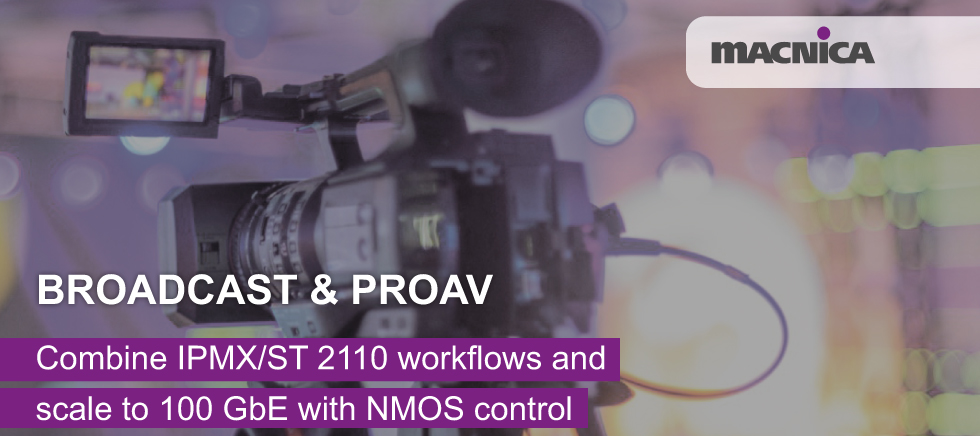The Math Change: 100 GbE and the New Threshold for Real-Time Video
By Andrew Starks, Director of Product Marketing
When I was in high school, I remember playing with the NewTek Digi-View Gold. It was a little two-hundred-dollar box that plugged into an Amiga’s parallel port and could capture a still image from any video camera, as long as everything in view was perfectly still. To get color, you captured that image three times using the included color wheel - just don’t bump the camera.
A few years later, working at a local TV station, we debated whether computers could ever record or play video in real time. Would there ever be a computer-based VTR? My take was, no way. The gap between what a computer could do and what dedicated hardware could do felt insurmountable. They were completely different worlds.
Obviously, I was wrong.
And yet, despite having lived through that kind of leap before, I’ve repeatedly felt that same sense of disbelief. Sometimes technology changes slowly, and then all at once, in a way that puts you on your back foot.
The last time I had that feeling was the first time I saw the MEP100. What on earth is this thing for? I couldn’t wrap my mind around the idea that a single computer could move and process eight channels of 4K video in real time over a single connection, yet here we are.
The Tipping Point
Why does progress always seem to arrive suddenly, as if out of nowhere? The truth is, it rarely does. Technologies evolve in parallel - networking, compute, storage, and software - each advancing at its own pace. Then, every so often, they align, and what was once impractical suddenly makes sense.
That’s what happened with ST 2110 workstations and servers running 100 GbE.
A decade ago, 100 GbE lived mostly in switch uplinks and data centers. The technology had been around for years, but few systems could make real use of it at the edge. Today, it’s showing up directly in workstations, production servers, and replay systems, because the surrounding technology ecosystem caught up.
Compute hardware now delivers the throughput needed to make 100 GbE practical. With PCI Express Gen 4 and modern DMA engines, a single server can move multiple UHD streams in real time. A current workstation can have dozens of CPU cores, terabytes of RAM, and GPU architectures designed for shared memory and ultra-fast I/O. Apple’s unified memory design and ProRes acceleration are great examples of how standard architectures have become powerful enough to sustain uncompressed or mezzanine-compressed workflows without special hardware.
At the same time, 4K production has become common, even when programs are delivered in 1080p. Higher capture resolution gives editors and colorists the flexibility to reframe, stabilize, or master in HDR with fewer artifacts when downscaling. Two uncompressed 4K 60 Hz streams are enough to saturate a 25 GbE link, so 100 GbE enables greater multi-channel operation within a single machine, reducing both power consumption and physical footprint.
Network economics have also shifted. Modern switch silicon and optics have driven the cost per gigabit sharply downward. A 400 GbE port can be divided into four 100 GbE ports, giving designers a flexible balance of density and bandwidth. What used to belong strictly to the core network is now affordable and practical at the edge.
All of these advances - compute, bandwidth, and cost - have converged to make 100 GbE practical at the workstation. It’s no longer a future-proofing exercise; it’s a sign that software, silicon, and switching have finally reached the same performance tier.
The SmartNIC for the Software-Defined Studio
When compute, bandwidth, and economics finally converged, the opportunity to integrate standard computers into real-time media systems without compromise emerged. That’s where the MEP100 fits.

The MEP100 is a 100 GbE SMPTE ST 2110 SmartNIC designed to let COTS workstations and servers move uncompressed and mezzanine-compressed video with the precision once reserved for dedicated broadcast hardware. It isn’t a generic NIC tuned for media; it’s a field-programmable architecture dedicated to professional IP video that fits cleanly into modern computing platforms.
At its core, the MEP100’s FPGA engine performs the timing-critical work that software shouldn’t have to: packetization, PTP synchronization, hitless redundancy, and JPEG-XS compression. On macOS, it uniquely enables ProRes over ST 2110-22, allowing Apple’s media engine to participate directly in standards-based IP production workflows without intermediate conversion or proprietary tunneling.
The hardware DMA controller moves media buffers directly between the network and user memory, bypassing the kernel and eliminating unnecessary copies. Combined with the M2S SDK, developers can work with video, audio, and ancillary data as ready-to-use frames, samples, and lines rather than packets or protocols. The result is exceptional efficiency and scalability.
A single server can process up to eight UHD or thirty-two FHD ST 2110 streams in real time, and that capacity can be shared across multiple applications. Load up your Docker containers, and a single system can run multiple real-time video applications in parallel, all sharing the same deterministic I/O path.
In this model, network I/O no longer defines the limit; the requirements do. Whether the application is a multiviewer, replay system, encoder, or something entirely new, the MEP100 lets software drive the creative boundary instead of the hardware.
With dual 100 GbE ports supporting ST 2022-7 redundancy and a unified SDK across macOS, Linux, and Windows, the MEP100 bridges the world of software-defined systems and the performance domain of dedicated hardware. It delivers the reliability broadcasters expect, the flexibility developers need, and the scalability that modern IP production demands.
This is what it looks like when COTS computing and professional media finally operate on the same wavelength.
Where the Impossible Becomes Routine
It turns out threshold moments never stop happening. First, it was still images. Then, full-motion video. Now, it’s a pile of uncompressed UHD streams filling a 100 GbE link - almost to line rate - all inside a computer that also runs your control software and analytics.
Maybe the lesson is simple: the impossible always becomes ordinary once the math changes.







